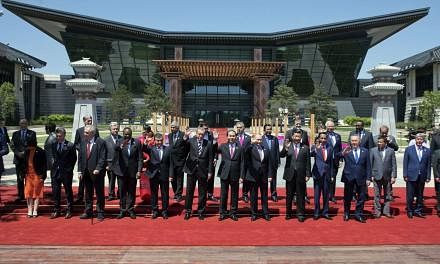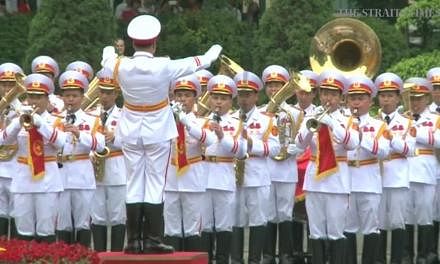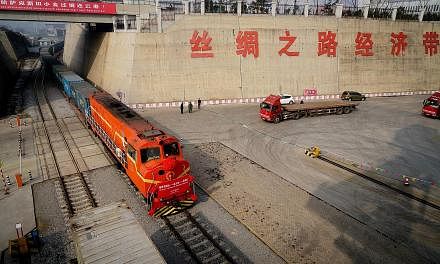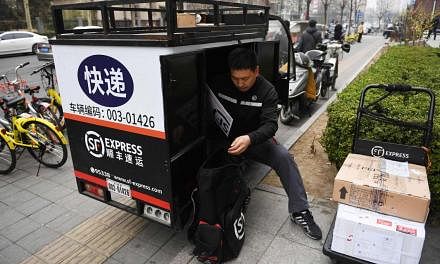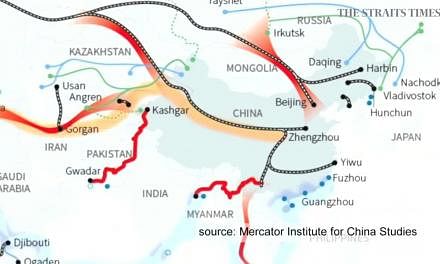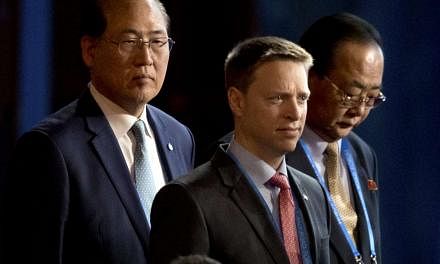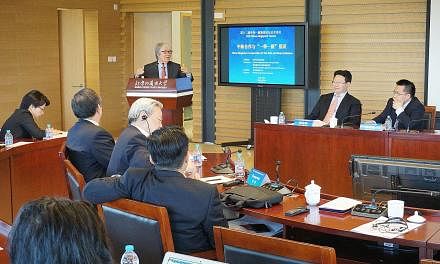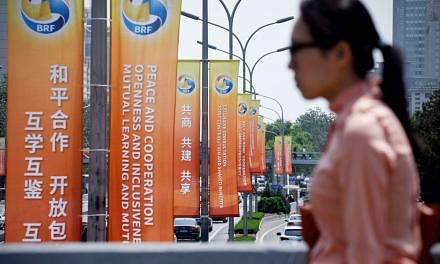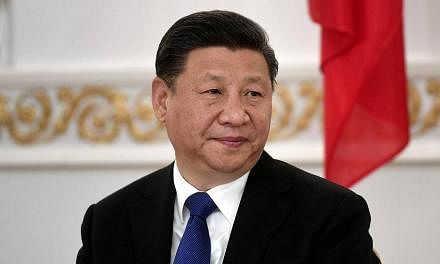When Chinese President Xi Jinping met US President Donald Trump in Florida last month, the issue of the United States joining the "Belt-and-Road Initiative" (BRI) was mentioned. However, it is safe to say that the response was at best lukewarm.
Yet, we argue that the timing is just right for this collaboration. In the 21st century, China is rapidly becoming one of the powerhouses of the so-called omnipresence economy - where retailers are present across all channels, both online and offline - built on amalgamated smart devices and movable Internet platforms.
Despite the US' uncertainty, the BRI - referring to China's One Belt, One Road planned network that would connect east, west and south Asia - has captured global attention. The hope is that the BRI may entrepreneurially create a "community of shared future" along its path.
Yet, with enormous differences involving languages, cultures and historical underpinnings, misunderstandings and frictions could, and often do, arise.
These could be aggravated if the Chinese and their media subconsciously feel "superior" to some of these nations, whose technological and economic development may not be at the same stage.
The ancient Silk Road was an organic development and made no demand on China to understand and appreciate the cultures of other civilisations. The BRI, however, is a Chinese initiative and places unprecedented demand on China to reverse such a mindset.
It is imperative that China proactively deepen its understanding of the cultures, economies and ways of interacting with nations along the BRI route.
To gain international trust and support, it is equally vital that China leverage its "soft power" to allow other civilisations to appreciate the depth and beauty of its culture. After all, in the 20th century, the US championed "human rights" as its global calling card. China in the 21st century should be marked by a new cultural paradigm of acceptance, communication and mutual enlightenment.
This new paradigm is surely as applicable to China and BRI nations as it is to the US. In fact, we argue that it can be a collaborative platform for the US and China. We are confident that the US and China can derive mutual economic benefit through symbiosis and innovation.
For example, it is well known that for every inch of Hollywood film sold globally, a dollar of US-made products will also be sold. Kung Fu Panda, a 2008 American computer-animated action comedy martial-arts film produced by DreamWorks, is a good example of "screens without frontiers" because it combines Hollywood's "bones" - that is, its technology - with an aspect of Chinese culture.
To develop an amalgamated culture which is neither Chinese nor US, the mindset of patience, of understanding the strengths and weaknesses of each other, and a willingness to ensure a "two-way street" are prerequisites.
A related industry is the omnipresence economy that is rapidly replacing the traditional economy, and China in the 21st century has emerged as a major, if not dominant, player.
According to eMarketer, the US omnipresence economy is around US$90 billion (S$127 billion), while China's is around US$334 billion. Furthermore, China maintains an annual double-digit increase of this market. Other BRI nations are also rapidly growing this market.
Last year, by spending 24 hours each in Beijing and a US city without any cash respectively, CNN reporter Will Ripley proved how China is rapidly becoming a powerhouse of the omnipresence economy. To his delight, in Beijing he could "definitely survive without carrying a pocketful of cash and credits - as long as you've got your smartphone". But in a US city, one must at least carry a credit card.
Against this backdrop, President Trump absolutely must pay close attention to the BRI's massive omnipresence market opportunity. Throughout his campaign, he said he intended to seek new engines for the US economy by linking up with current development trends. US and China collaboration to expand and develop this vast "omnipresence economy" in the BRI nations, which include China, is an obvious and pressing choice for Mr Trump.
- Feng Da Hsuan is special adviser of the rector and director of global affairs, University of Macau. Liang Haiming is chairman and chief economist of the China Silk Road iValley Research Institute.

